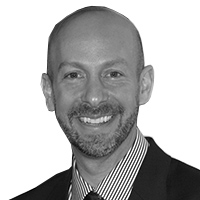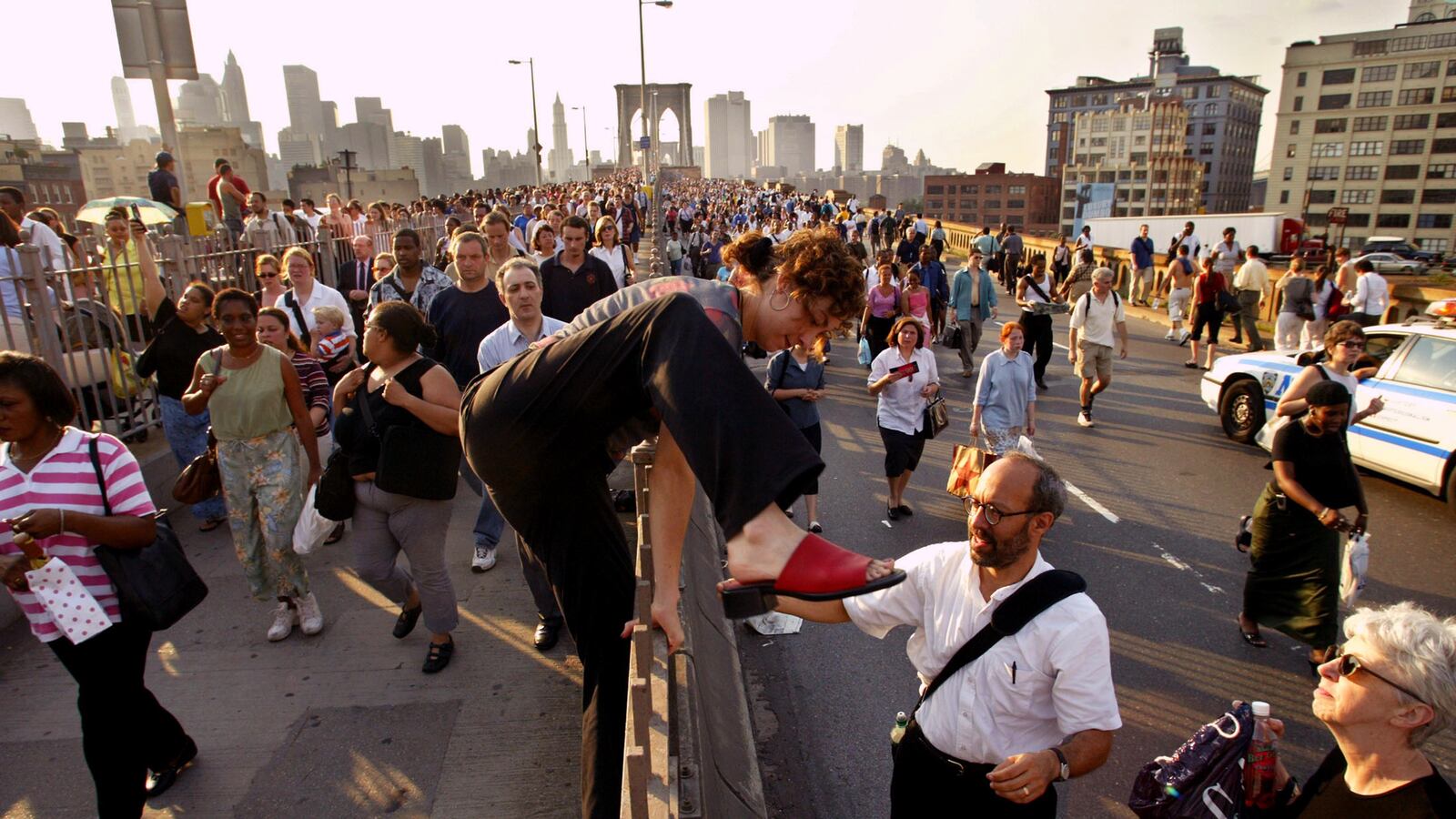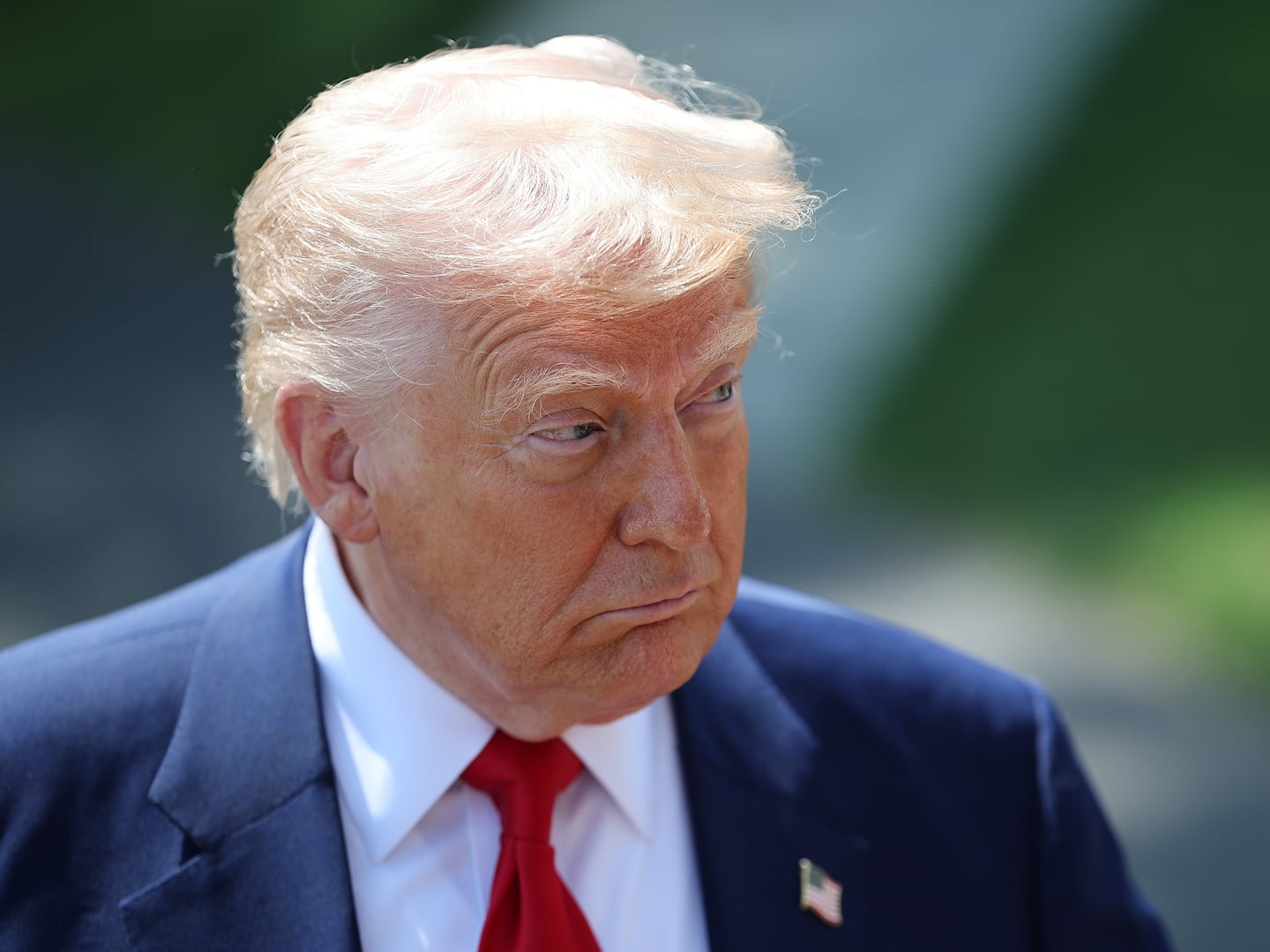It was August 14, 2003, at 4:09 p.m. I was new to New York City, a Boston transplant, standing atop a ladder in my new apartment on 108th Street. My friend Rich steadied the base as I prepared to drill a hole in the ceiling to hang my bike, a strange but necessary New York City custom.
Just as my finger pressed the red plastic trigger on the drill, the power fizzled out. Blown fuse.
When we checked the fuse box, we realized it was much worse. We had blown the power throughout my apartment. So we went in the hallway to get the super, and that’s when I realized we had actually blown the electricity in the entire six-story apartment building. There was no power anywhere. I quickly began thinking of somewhere to hide.
But when we went out to the street, something was different. There was no hum of air conditioners, no music playing. And like us, people were pouring out of their buildings, as if the city was inviting everyone to come out and come together. With the power down, the air was getting cooler and you could feel a light breeze. People stopped rushing and seemed to relax.
So what happens when New York City goes dark? Rich and I climbed on our bikes to find out.
A giant flatbed truck rolled by us up Amsterdam, laden with cheering people who were hitching a ride get home to Harlem and the Bronx. The clinging passengers cheered and waved. And everyone waved back.
As we crossed an intersection farther south on Columbus, we saw a guy in a plaid shirt drinking a 40-ounce from a brown paper bag while he expertly directed traffic. People giggled, gave thumbs-up signs, and tooted their horns in appreciation.
When we hit the Meatpacking District, a crowd was gathering at the legendary bar Hogs and Heifers. The freezers were down and the meat was rapidly defrosting, so the owners had set up a grill and were giving out free hamburgers and hot dogs. People clustered on the sidewalk, and an instant neighborhood party formed.
On our way back uptown, we rode by the brownstones of Chelsea, where a family had set up glowing candles on their front stoop and sat outside in the quiet night. We stopped to admire their perfect setup, and they invited us for a glass of wine by candlelight.
Later, we passed the old post office and saw stranded businessmen in rumpled suits had set up makeshift beds on the grand steps. They sat and played cards, safely huddled together before they went to sleep.

New York tends to reveal itself in rare moments like this. On this night, without the hum of air conditioners, without music, without traffic and horns honking, you could feel a peacefulness and a sense of community. It’s something that beneath the din is probably almost always there, it’s just harder to see when the power is on. And one of the challenges of being a New Yorker is to try to search and find it as often as possible.
When I got back to my apartment and locked the door, I heard a quiet voice call out, “Hello?” I had forgotten that my friend Adam from Boston was staying on my couch. He didn’t know the city well and he was terrified, sitting in the dark, waiting for me to get back. “What’s going on out there?” he asked me with a little tremble in his voice. I knew just how to calm him down. “Let’s go out there,” I said. “I’ll show you.”






